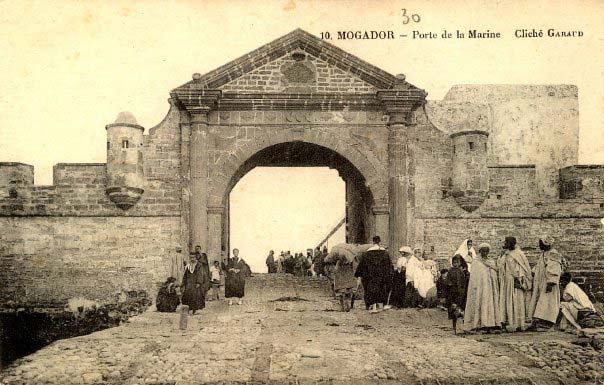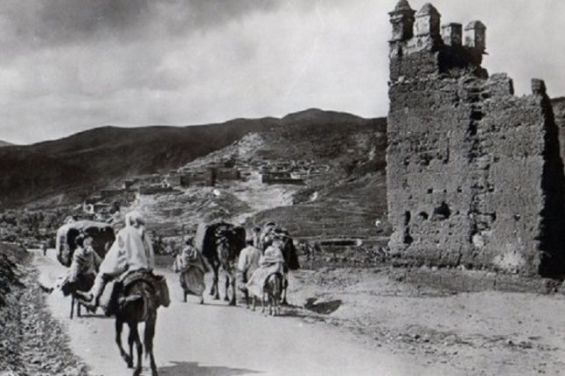In 1799, Morocco witnessed a dreadful plague that killed hundreds of people daily. In Mogador, the calamities caused by the deadly plague were described by a foreign merchant who lived in the coastal city.
In a series of letters sent to his correspondents in Europe, James G. Jackson gave a detailed account on the «rise, progress and decrease» of the plague in Mogador. His manuscripts entitled «An Account of Timbuctoo and Housa Territories in the Interior of Africa» and published in 1820 were compiled by a history platform called Dianabuja.
The latter recalls that the plague made its way to Mogador through Fes. «When the Emperor’s army proceeded from Fes to Marocco [Marrakech] in the summer of 1799, a detachment of which passed by Mogador».
The detachment consisted of «20,000 horses and 10,000 foot» that had the plague with them. Passing through the city, which had an international trade harbor, the plague appeared three days later.
A deadly plague in Mogador
But months before summer 1799, James G. Jackson, who lived in Mogador, wrote in one of his letters on May the 20th that «smallpox rages violently throughout this country (Morocco)».

In his own explanation, the merchant wrote that the plague’s origin is «ascribed to the famine that has of late pervaded this country, and which was produced by the incredible devastation of the devouring locusts; the dregs of olives, after the oil had been extracted, has been the only food that could be procured by many thousands».
In less than three months, the situation got worse in Mogador. In one of his manuscripts, he described the plague as one of a «deadly species». On July the 25th, the merchant’s letter stated that «the deaths in this town, which contained a population of 10,000, according to the imperial register, are from forty to fifty each day».
Worried about the rapidly spreading epidemy, Jackson reported that everyone in Mogador was engaged to fight against the plague. However, eight days later, Jackson’s optimism faded away.
On the 1st of August, the merchant sent another letter to Europe in which he complained about the aggravating and violent situation in Mogador. «No one thinks of business or the affairs of the world; but each individual anticipates that he will be next called away», he wrote.
Smoking cigar to aviod infection
In his letter, Jackson announced the death of several foreign merchants in the city to his addressee. He also disclosed one of the methods he used in order not to catch the disease. While visiting one of his friends who had the plague, Jackson was urged by a fellow to smoke cigar in order not to get sick.
«I believe that the smoke of tobacco is antipestilential; this, added to the precaution of avoiding contact, and inhalation of the breath of the person infected, appears to be quite sufficient to secure a person from infection».
By the end of August, the 23rd, the situation in Mogador got better and the plague started to «rabidly diminish». According to Jackson, deaths moved from 100 to 20 or 30 per day.

However, Business which was flourishing in the city fell from grace. «The best gum is selling at Akka for six dollars a quintal : they will not bring it here, fearing the infection», explained the merchant in one of his writings. Once again, Jackson revealed one of his tips and tricks to avoid infection.
«I have had fixed in my dining room, a table that extends from one end to the other. I walk or sit on one side of the table, my visitors on the other. I am only cautious to avoid personal contact», wrote the man who stuck a fumigating pot of gum sandarac in front of his house in an attempt to stay safe and sound.
The end of a deadly period
By October the 29th, the plague ceased in Mogador. Merchants opened their houses and the situation started to get back to normal, despite the deaths in the surrounding provinces.
On November the 11th, commerce began to flourish again in the coastal town as the plague started to diminish. But by the end of November, Jackson’s hopes were crushed again.

«The deadly epidemy that has lately visited us, and which at one period carried off above 100 each day, has now confined its daily mortality to two or three; some days none», he wrote in a November letter.
He explained that when Berbers from Haha (near Essaouira) come to the city to sell the clothes of their loved ones who died the «epidemy increases to three, four, and five a day; then, in three or four days», concluded the foreign merchant.
Jackson’s book made its way to London at the beginning of the 19th century. It was described by historical accounts as «the most detailed contemporary description of the plague» that hit Mogador, Fes and Marrakech in 1799.





 chargement...
chargement...













